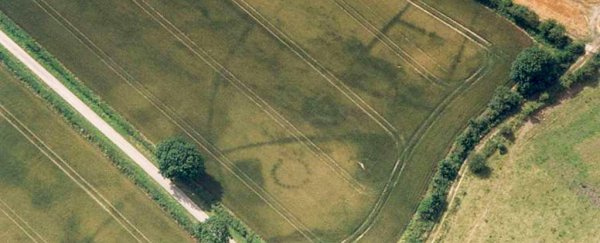Thanks to modern radiocarbon dating techniques, archaeologists have managed to pin down the age of a huge timber monument close to Stonehenge, and it's much older than we thought – in fact it pre-dates the famous stone circle by 800 years.
The two giant wooden circles in Avebury, set out in an eyeglass shape and about 37 kilometres (23 miles) from Stonehenge, were first dated in the late 1980s. Originally, both Stonehenge and these wooden circles were thought to have been put up around 2,500 BC.
Apparently not, say the latest tests carried out by a team from the Historic England organisation – the original dating was done from a piece of pottery found in one of the post holes, but this time the researchers looked at the charred remains of the posts themselves.
Based on those remains, collected in the 1980s, it now looks like the timber palisades were thumped into the ground somewhere around 3,300 BC, making this an "unprecedented" find for British archaeologists.
"We've discovered a completely new type of monumental structure at a time when we didn't think any existed in Britain," one of the team, Alex Bayliss from the University of Stirling in the UK, told the BBC.
"There are palisades later and earlier but these are different."
Stonehenge and its surrounding areas have long fascinated historians, as these sites offer up some incredible pieces of evidence about what life was like in England thousands of years ago.
Avebury is a big part of that and has a henge all of its own – a large circular bank more than 1,000 metres (1,094 yards) in circumference. It also features two stone circles, which seem to have been built after the wooden monument.
Trying to piece together exactly what happened here is an intriguing bit of detective work for archaeologists to tackle. Bayliss told the BBC the wooden palisades were probably only in the ground "very briefly" and were "definitely burnt down deliberately".
According to the experts the two large circles were built with more than 4,000 trees and stretched for more than 4 kilometres (2.5 miles) in total. That size means it's too big for herding cattle and must've been used for ceremonial purposes instead.
Maybe these structures were tied to some kind of ancient festival or ritual, with one of the circles set up for men and one for women, say the researchers.
"It's significant because it places the construction earlier and it's a period about which we don't know a lot," archaeologist Alasdair Whittle from the University of Cardiff in the UK, who made the original excavation in the 1980s, told the BBC.
"It also shows us a lot of later activity of either people gathering seasonally or even permanently in what seems to be quite large numbers."
Last year we reported on another super structure made out of wood even closer to Stonehenge, and again archaeologists think it was pulled down in a hurry – perhaps a sign of a chaotic religious and political mood at the time.
Also nearby is the largest prehistoric human-made chalk mound, Silbury Hill, though as with the Avebury site and indeed Stonehenge, its purpose remains unclear.
We now know a little more about this ancient site – and we're looking forward to see which part of the mystery gets solved next.
